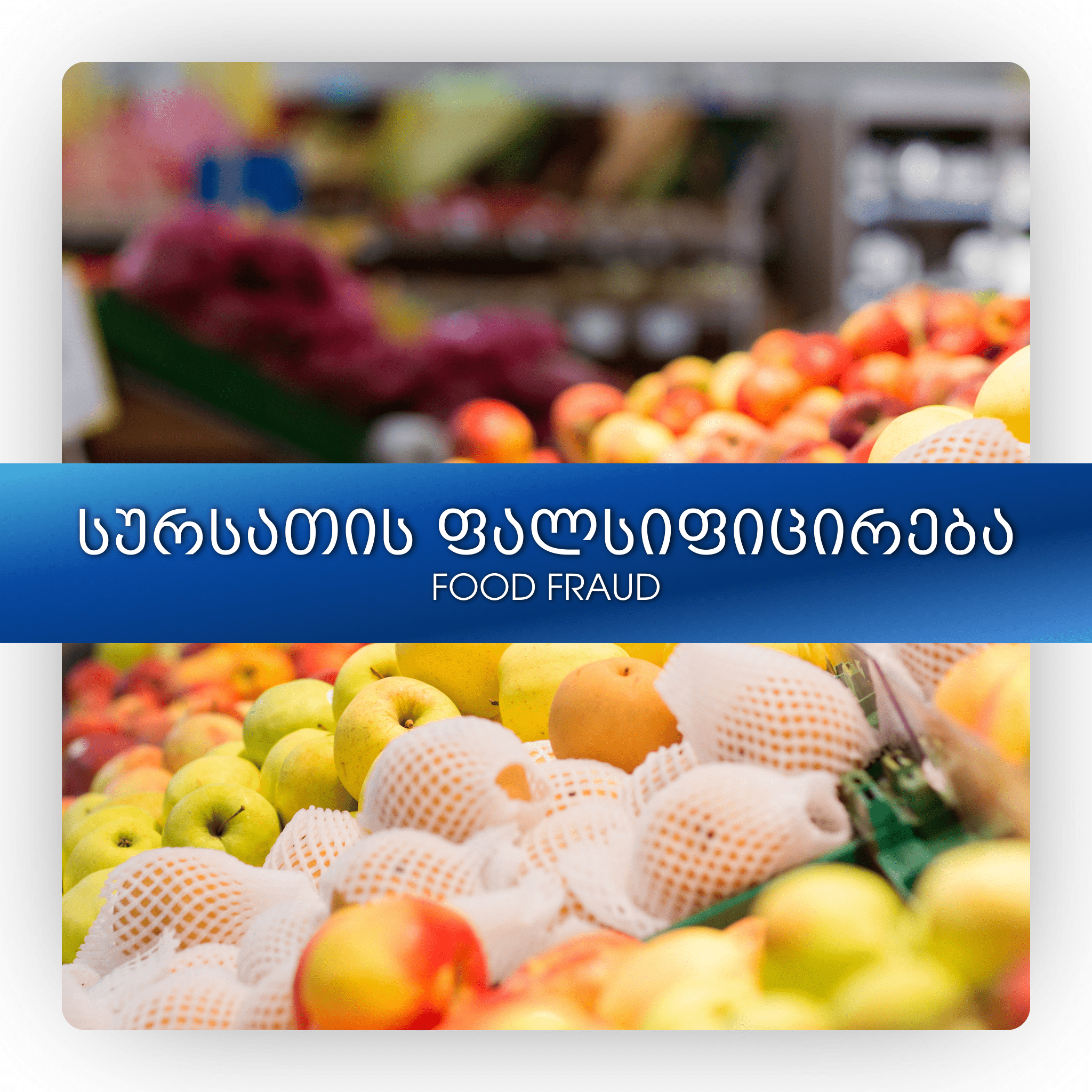Food Fraud
Food adulteration occurs when, when selling food products, the consumer does not have proper information about the product and the business operator deliberately misleads the consumer in order to obtain financial profit.
Types of food adulteration:
◾️ Dilution: Mixing a high value liquid ingredient with a low value liquid. For example: mixing milk with water;
◾️ Incorrect marking/labeling: placing incorrect, inappropriate information on the product packaging. For example: Placing Tamrin “Organic” on product packaging when the product is not actually organic;
◾️ Hiding: Hiding low value products or ingredients. For example: coloring fruit to cover its defects;
◾️ Substitution: Substitution of high-quality, value-added ingredients with similar but lower-quality ingredients. For example: replacing premium quality coffee beans with relatively low quality coffee beans;
◾️ Counterfeiting: copying the brand name, packaging, recipe, manufacturing process, etc. of a food product;
◾️ Unapproved extension: addition of unknown and unapproved materials for food in order to improve the quality indicators of the product. for example Addition of melamine to milk.
◾️ "Grey Market"/Theft: Importing or exporting food products using unauthorized methods and routes, as well as avoiding payment of taxes or regulations.
Frequently adulterated food products:
◾️ olive oil;
◾️ fish;
◾️ milk;
◾️ juice;
◾️ vanilla extract;
◾️ Grape wine;
◾️ Saffron.
To prevent food adulteration, the use of tools such as the Food Fraud Database, the EU RASFF portal and HorizonScan by FERA may lead to the simplification of processes such as monitoring and information exchange on potential risks and false incidents in the food supply chain. Companies should also do a vulnerability assessment to ensure the quality of food products.
A food fraud vulnerability assessment is a documented assessment that identifies vulnerabilities to food fraud and explains how those vulnerabilities were identified.
Reasons for conducting a vulnerability assessment:
◾️ To protect consumers: Food that is vulnerable to fraud poses significant risks to consumers. Adulterated or diluted food poses a direct risk to consumers from microbial contaminants, chemical contaminants, allergens or unhygienic handling during any adulteration or substitution, and there are risks of causing chronic diseases;
◾️ To protect the brand: any problem related to food products can lead to a loss of consumer confidence, which can be catastrophic for the brand;
◾️ To meet regulatory requirements: adulteration, substitution or dilution of an ingredient indicates a defect in product traceability, which means non-compliance with the requirements of food safety regulations;
◾️ To avoid financial loss: Product withdrawals, recalls, criminal prosecutions, and civil lawsuits typically result from fraudulent counterfeiting. This can be financially devastating.
Steps for Food Fraud Vulnerability Assessment:
Check previous food fraud cases: Use food fraud databases to do this.
Investigate new or emerging issues: New or emerging issues include price increases and supply-demand imbalances. This may increase the risk of food fraud for this material in the future.
Investigate your supply chain: Find out where the material comes from. Is the supply chain short or long? Longer supply chains with multiple stages can provide more opportunities for fraudulent activity.
Record your conclusions: As you study the material, record your conclusions from the previous steps. This is an important part of the vulnerability assessment report.
Estimate the probability: Use the knowledge gained in the previous steps to estimate the probability that the material will be affected by food fraud.
Assess the Consequences: Consider the likely consequences of tampering. Will there be a risk to consumers? Do I need to return the product? Will there be serious financial losses if counterfeiting is detected?
Create a report: A completed food fraud vulnerability assessment should include:
◾️ Name of the material: food product or ingredient;
◾️ date of assessment;
◾️ date of review of assessment;
◾️ Name of the person(s) who performed the assessment;
◾️ Page numbers and other document control features;
◾️ Field information that reflects the requirements of the food safety management system standard;
◾️ conclusion about the overall vulnerability of the material;
◾️ Information that shows how the estimated and outcome estimates were achieved
